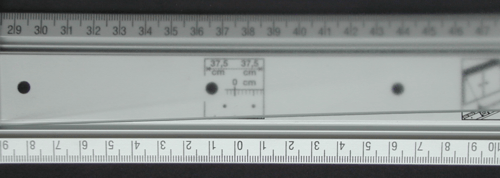Distinctness of image
Distinctness of image, DOI, is a quantification of the deviation of the direction of light propagation from the regular direction by scattering during transmission or reflection. DOI is sensitive to even subtle scattering effects; the more light is being scattered out of the regular direction the more the initially sharp (well defined) image is blurred (that is, small image details are being lost). In polluted air it is the sum of all particles of various dimensions (dust, aerosols, vapor, etc.) that induces haze.[1]
DOI is measured to characterize the visual appearance of polished high-gloss surfaces such as automotive car finishes, mirrors, beyond the capabilities of gloss.

Other appearance phenomena are: gloss, haze, and orange peel
See also
References
- ↑ Fan, Charles H. "Validation of Orange Peel Measurement of Paint Appearance on Composite Substrates" General Motors Corporation
- ASTM Standards on Color & Appearance Measurement
- Richard S. Hunter, The Measurement of Appearance, John Wiley & Sons (1987).
External links
Further technical information on DOI, Haze and Visual appearance can be found here